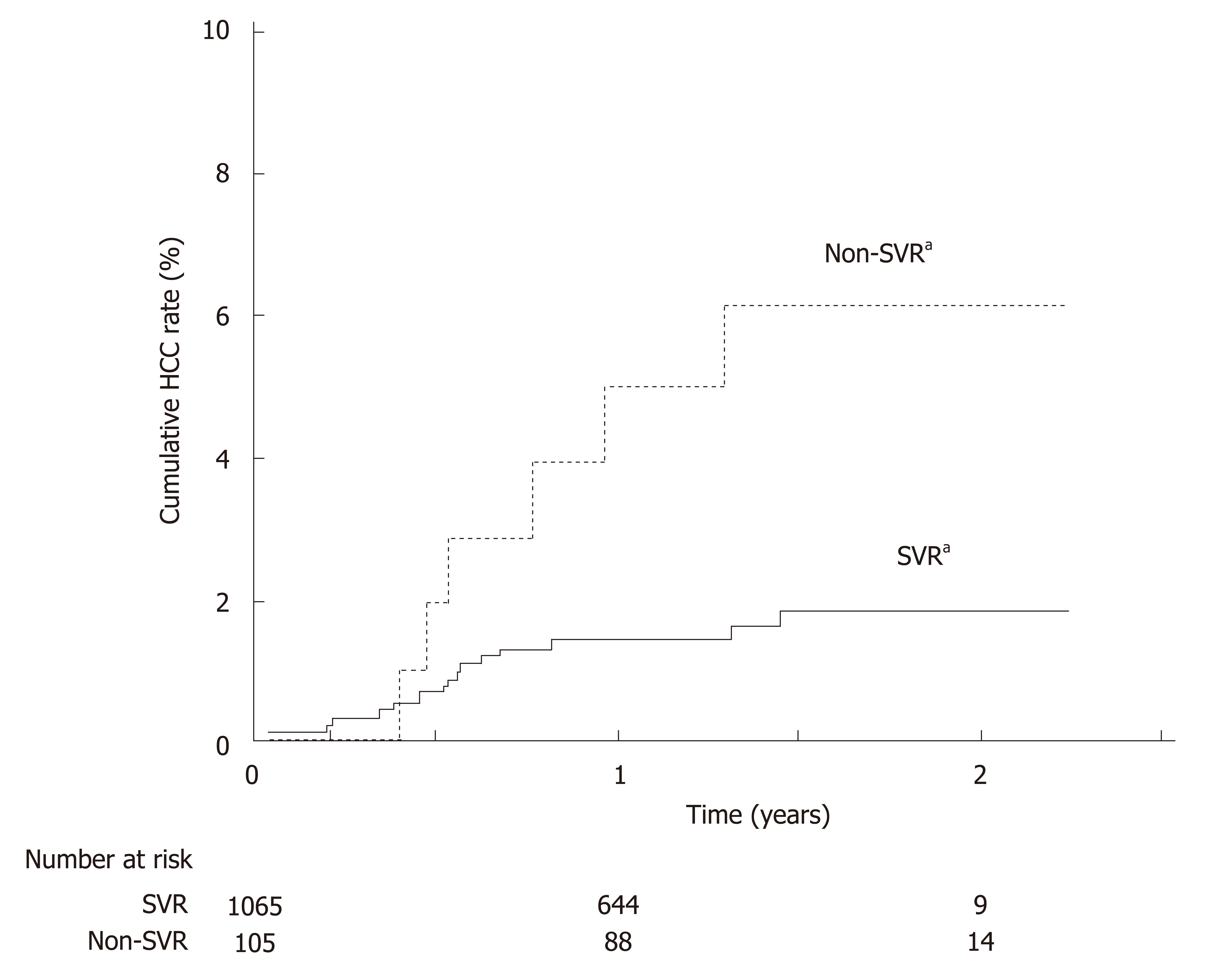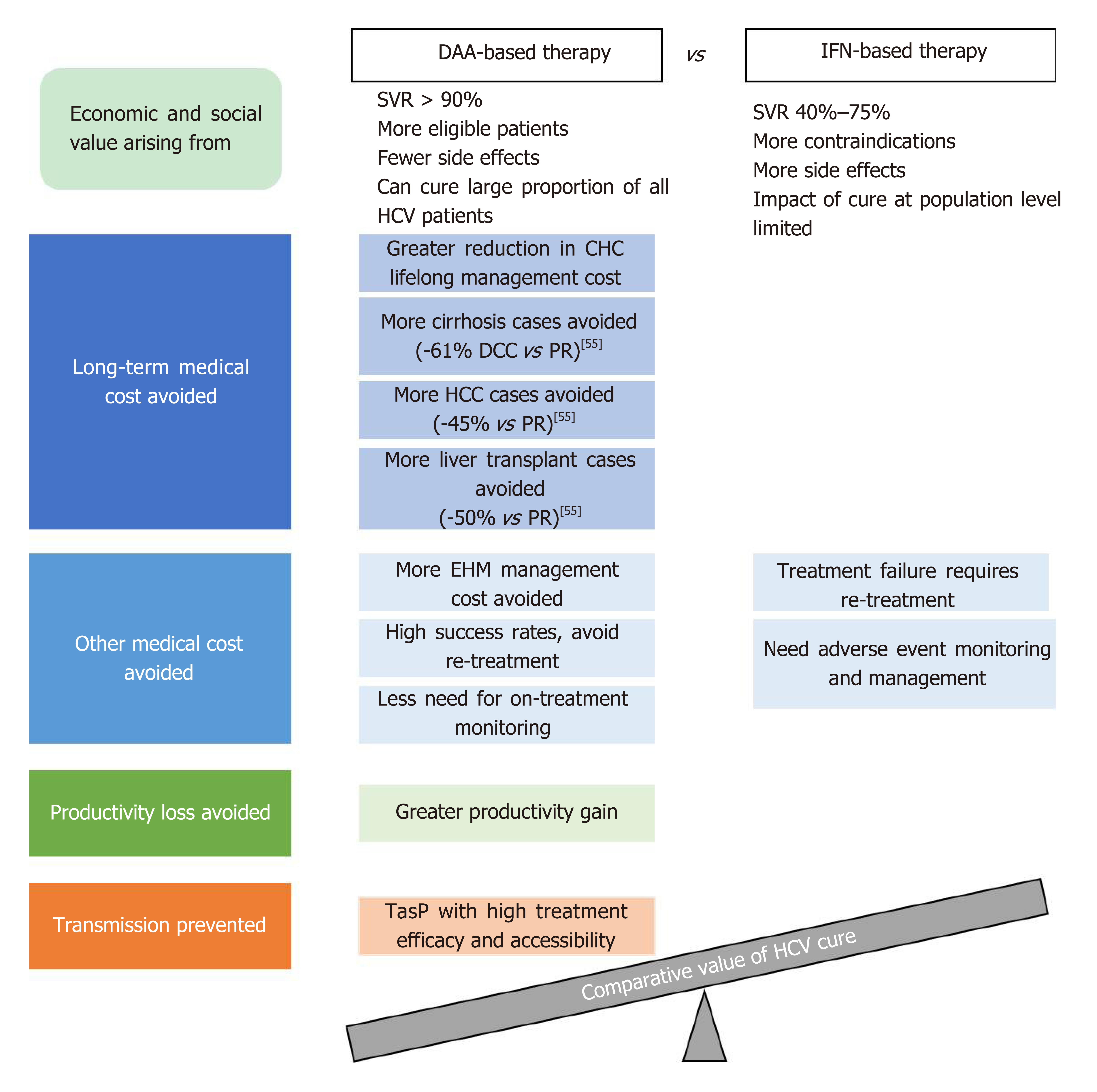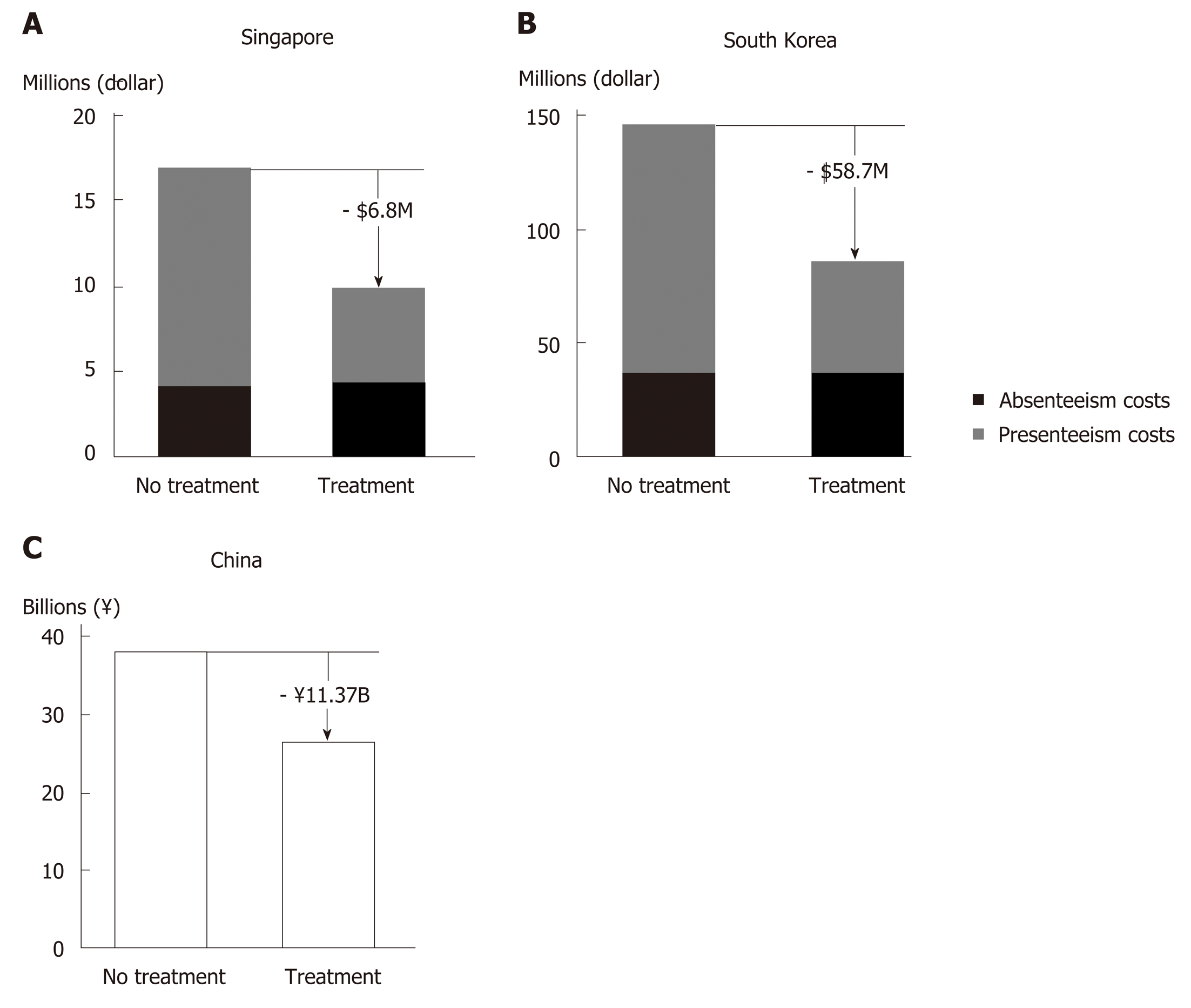Copyright
©The Author(s) 2019.
World J Hepatol. May 27, 2019; 11(5): 421-441
Published online May 27, 2019. doi: 10.4254/wjh.v11.i5.421
Published online May 27, 2019. doi: 10.4254/wjh.v11.i5.421
Figure 1 Viral elimination by all-oral direct acting antiviral treatment reduces rate of hepatocellular carcinoma in hepatitis C virus-infected patients.
Japanese patients with GT1 hepatitis C virus infection initiating all-oral direct acting antiviral treatment between September 2014 and May 2016 were followed up for a range of 0.1–2.2 years (median follow-up period 1.3 years). The number of patients at risk is shown below each time point. Patients who achieved sustained virologic response had significantly lower incidence of hepatocellular carcinoma compared to patients without sustained virologic response. aP = 0.007, log-rank test. SVR: Sustained virologic response. Adapted with permission from Ogata et al[27], 2017.
Figure 2 Main factors contributing to the comparative economic and societal value of direct acting antiviral- and interferon-based treatment for hepatitis C virus infection.
Predicted relative percentage reductions in decompensated cirrhosis, hepatocellular carcinoma, and liver transplant: as reported in Wu et al[55], 2019. CHC: Chronic hepatitis C; DAA: direct acting antiviral; DCC: Decompensated cirrhosis; EHM: Extrahepatic manifestation; HCC: Hepatocellular carcinoma; HCV: Hepatitis C virus; IFN: interferon; PR: Pegylated-interferon plus ribavirin; SVR: Sustained virologic response; TasP: Treatment as prevention.
Figure 3 Projected chronic hepatitis C-related medical costs in China in the absence of effective hepatitis C virus treatment.
Estimation based on annual data (2005–2013) of hepatitis C virus infection cases from the Chinese Center for Disease Control and Prevention; graph generated using data reported in Wei et al[88], 2015. HCC: Hepatocellular carcinoma.
Figure 4 Predicted reduction in hepatitis C virus-related productivity loss with direct acting antiviral treatment.
Compared to no treatment, direct acting antiviral treatment for GT1 hepatitis C virus patients was predicted to reduce productivity loss in Singapore, South Korea (A and B: Adapted with permission from Younossi et al[104], 2017) and China (C: Graph generated using data reported in Ye et al[91], 2018); modelling was over a one-year time horizon.
- Citation: Xie Q, Xuan JW, Tang H, Ye XG, Xu P, Lee IH, Hu SL. Hepatitis C virus cure with direct acting antivirals: Clinical, economic, societal and patient value for China. World J Hepatol 2019; 11(5): 421-441
- URL: https://www.wjgnet.com/1948-5182/full/v11/i5/421.htm
- DOI: https://dx.doi.org/10.4254/wjh.v11.i5.421












